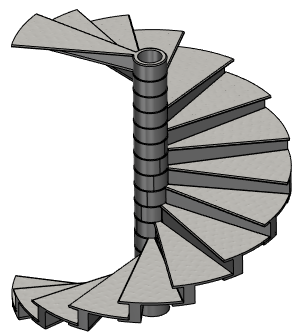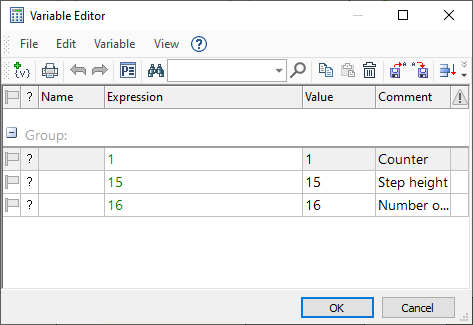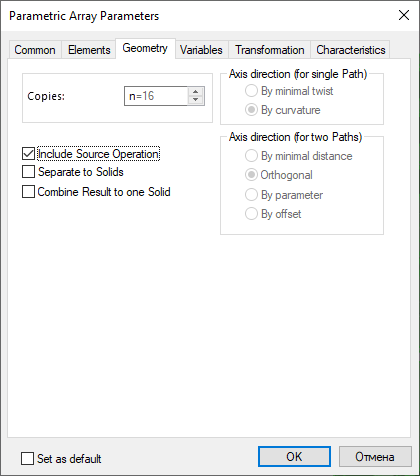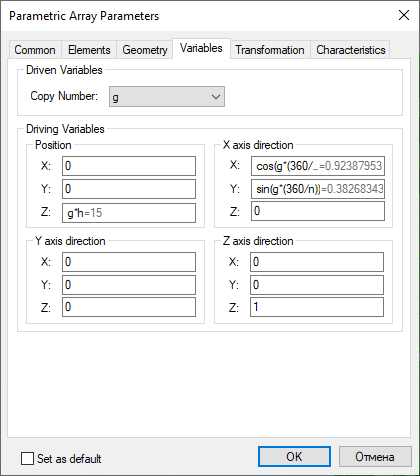Example of Parametric Array of 3D Elements with Free Orientation of Copies |
  
|
As was mentioned earlier, creation of a parametric array is similar to creating a Parametric Sweep. Here, we will review the array creation on the example of a spiral staircase.
The model is built as a parametric array with free orientation of copies based on the 3D fragment of one step of the staircase.

The example files are located in the Examples library, in the \3D Modeling\Array\Winding Stairs.grb folder.
When creating an array in this way, just select a body, specify the number of copies and assign an independent variable to the Number of copy parameter. By using the variable assuming a copy's ordinal number, you can define certain relations in the driving parameters input boxes, as well as in the 2D or 3D constructions defining the position and geometry of the source body. In this example, a step of the staircase is copied with a change in the height and rotation angle about the staircase axis.
For convenience of handling the model, the following variables are created in the variable editor:

The step of the spiral staircase is inserted in the document as a 3D fragment. This fragment is inserted in such a way, that the axis of the staircase coincides with the global Z-axis. If the fragment were located arbitrarily, then one would have to select a local coordinate system, using the option:
|
<6> |
Select source coordinate system |
Its Z-axis must have been directed along the staircase axis.
In this example, the expression defining the position of each copy depending on the copy count number can be entered in the input boxes of the driving parameters. The array parameters can be defined in the ![]() Parametric Array command's
Parametric Array command's ![]() parameters window or in the
parameters window or in the ![]() operation parameters dialog.
operation parameters dialog.


Positions of copies will be calculated by the linear law along the global Z-axis with the step defined by the variable h. The X-axis of the current copy's coordinate system will be rotated about the axis of the staircase. This moment of the X-axis is defined by the X-axis direction parameter group. The Z-axis direction of a copy's coordinate system coincides with the staircase axis and with the global Z-axis. The Y-axis direction of a copy's coordinate system should be calculated automatically, therefore all driving parameters in this group are set to zero.